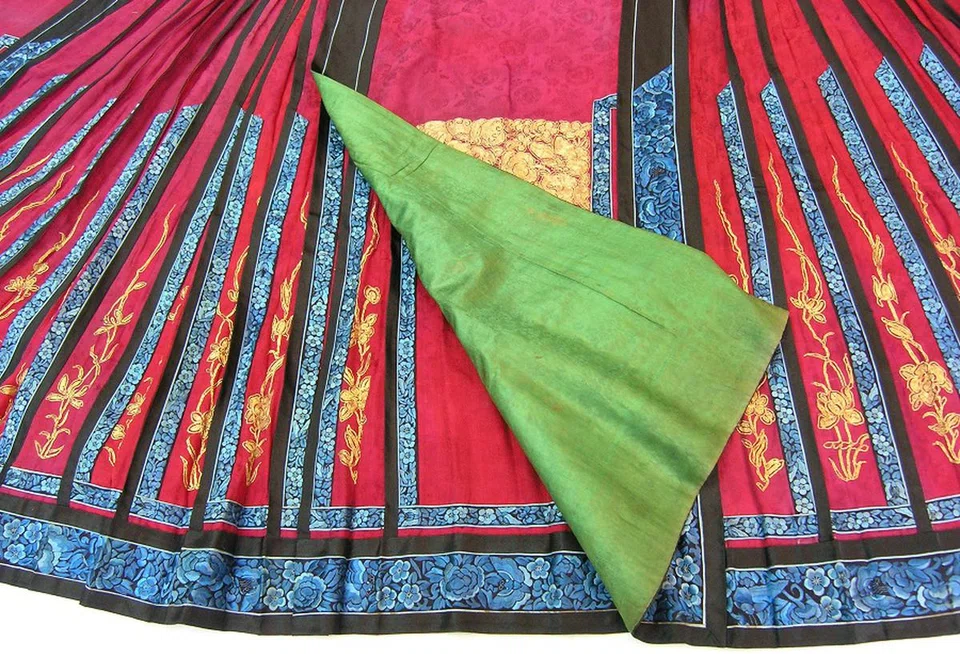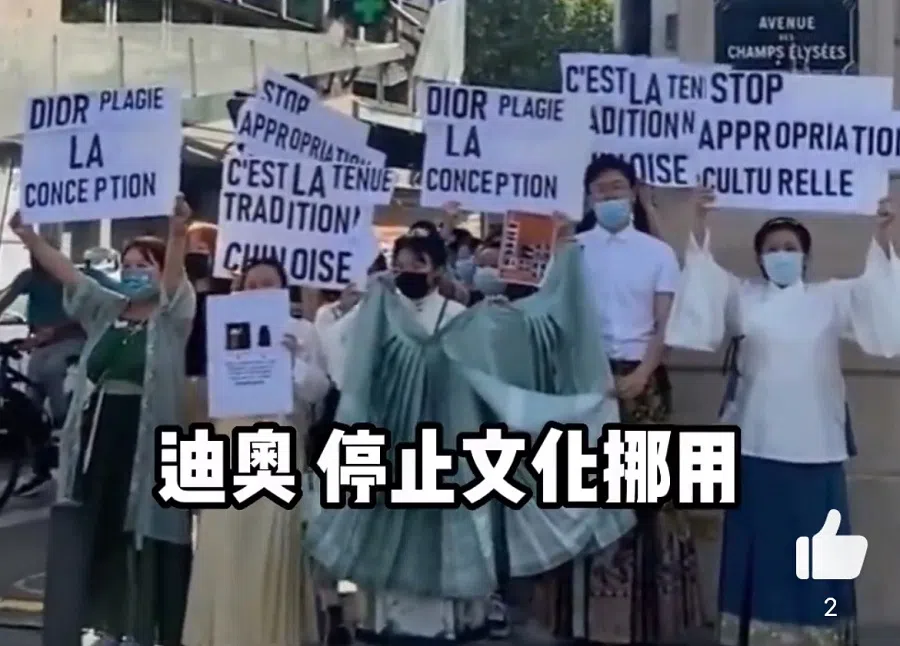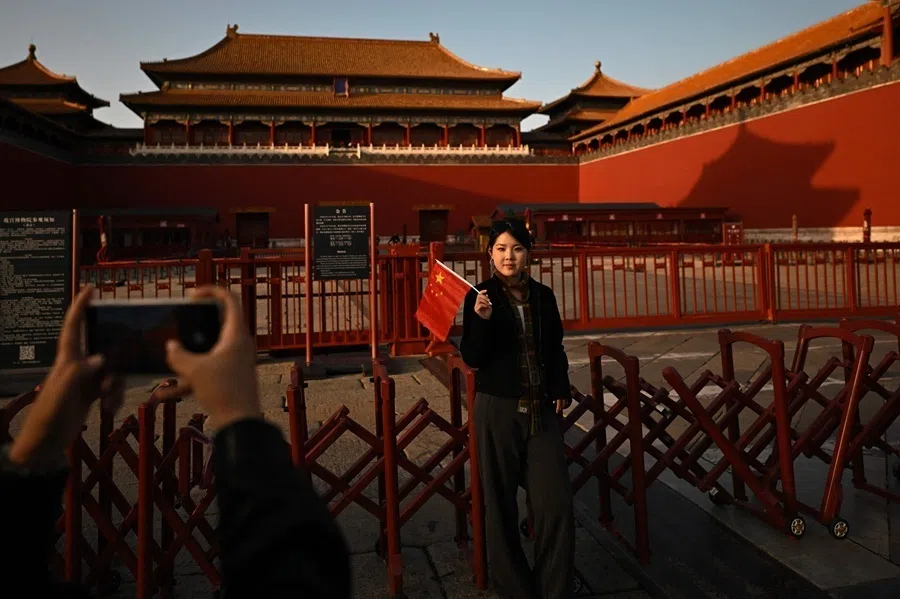Why young Chinese women are loving the horse-face skirt
The popularity of the horse-face skirt reflects the broader trend toward the normalisation of traditional Chinese aesthetics in contemporary China, says NUS academic Courtney Fu. Will it be a fleeting trend similar to the “China chic” streetwear brands or evolve into a lasting fashion identity representative of China on the global stage?

The “horse-face skirt”, or what is known as mamianqun (马面裙) in Mandarin, traces its origins to the Song dynasty (960-1279). Its distinctive design finds precedent in the Song dynasty’s “spinning skirt” (旋裙), characterised by two pieces of fabric joined together at the waistband, overlapping at the front and back to form a flat panel.
This ingenious construction facilitates movement, particularly when mouting and dismounting a horse, all while preserving the wearer’s modesty. The two-piece fabric cleverly opens up, adeptly concealing undergarments from view.
Aesthetics and practicality all in one
Originally donned by lower-class women during the Song era, the horse-face skirt later became a wardrobe staple in the ensuing Ming and Qing dynasties. The design evolved to include pleats on both fabric pieces to enhance greater leg mobility and provide a customisable fit to the wearer’s body.
By the Qing dynasty, the side pleats had become so numerous that it was metaphorically referred to as a “hundred-fold” skirt or “fish-scale” skirt. Embellishments in the forms of embroidery and piping had also become more elaborate in tandem with the opulent tastes of the Qing dynasty.
Contrary to its name, the horse-face skirt does not derive its etymology from any resemblance to equine features; rather, there’s a homophonic link. The name originally refers to the ancient military defensive platforms (码面, mamian) which phonetically corresponds with “horse-face”.
The front and back panels of the skirt mirror the trapezoid shape of raised military towers, while the pleats on both sides, resembling defensive walls connecting neighbouring towers, strengthen this association.

Among the array of historical garments embraced by hanfu (汉服, the traditional attire worn by Han Chinese people) aficionados, the horse-face skirt has notably experienced a surge in popularity since the latter half of 2022, making it one of the most recognisable historical attires in public awareness. What accounts for its sudden rise and what implications does it hold for the state of China’s fashion and its cultural identity?
Short-term impetus: alleged cultural appropriation by Dior
This is thanks to Dior’s Fall 2022 collection which threw this ancient skirt of China under international spotlight. The collection featured a mid-calf black skirt bearing striking similarities to the Chinese horse-face skirt in both structure and shape. However, it was marketed as “a hallmark Dior silhouette” with a price tag of US$3,800.
As a result of this controversy, the horse-face skirt has entered public consciousness, leading to a deeper understanding of its history and a general re-evaluation of traditional sartorial culture.

This blatant plagiarism provoked outrage among Chinese netizens who took to the internet to accuse Dior of cultural appropriation. It also sparked a demonstration outside the brand’s boutique on Avenue des Champs-Élysées in Paris where protesters clad in horse-face skirts proclaimed Chinese ownership of the skirt.
Subsequently, the skirt was removed from Dior’s official website, but the fashion house refused to issue any public apology. As a result of this controversy, the horse-face skirt has entered public consciousness, leading to a deeper understanding of its history and a general re-evaluation of traditional sartorial culture.
This newfound appreciation led to a surge in demand for the skirt on online shopping platforms. According to xinhuanet.com, more than 730,000 pieces of horse-face skirts were sold on Taobao during the 11 November Singles’ Day sales event in 2023. Endorsements by celebrities who chose to wear the skirt on red carpets and its appearance in the 2024 Spring Festive Gala on state television have further sustained the momentum of the trend.

The horse-face skirt’s popularity has also spread overseas with large orders from mostly Southeast Asian countries flooding in, especially during the Chinese New Year period. A local Singapore student shared in my class that she wore a horse-face skirt to visit relatives during the festive season, highlighting how this attire poses a challenge to the qipao as the traditional ethnic wear for overseas Chinese communities.
Besides being worn with the full historical hanfu ensemble, the horse-face skirt can also be paired effortlessly with various tops such as long-sleeve shirts, sweaters and even t-shirts, to produce modern and chic looks.
Integrating traditional aesthetics into daily life
The widespread appeal of the horse-face skirt not only underscores the sustained influence of the hanfu movement but also signals the continued incorporation of traditional aesthetics into everyday attire. This trend aligns with the growing popularity of neo-Chinese style, which gained momentum starting in 2023.
Besides being worn with the full historical hanfu ensemble, the horse-face skirt can also be paired effortlessly with various tops such as long-sleeve shirts, sweaters and even t-shirts, to produce modern and chic looks. It does not require elaborate styling, make-up or specific occasions as other hanfu outfits, but can be integrated into the daily wardrobe with relative ease. The horse-face skirt’s versatility aligns itself more seamlessly with the ethos of neo-Chinese style than other historical garments.
... hanfu and traditional sartorial culture symbolise China’s illustrious past and resonate strongly with the cultural pride and confidence of young millennials and Gen Zs.
Blending traditional Chinese aesthetics with contemporary design sensibilities, the neo-Chinese style has been observed in architecture and interior design and has recently made its way into the fashion industry. According to WWD’s (Women’s Wear Daily) coverage of the latest fashion weeks in China, it represents a “collective narrative of the Chinese fashion industry”, highlighting its growing relevance and significant market potential.
Expressing cultural pride and sense of identity
As a social movement and cultural phenomenon, hanfu and traditional sartorial culture symbolise China’s illustrious past and resonate strongly with the cultural pride and confidence of young millennials and Gen Zs.
The horse-face skirt embodies the historical essence of female fashion in late imperial China while seamlessly adapting to modern consumer tastes. It occupies the middle ground between the purist advocacy for a faithful restoration of historical attire within the hanfu movement and the popular demand for practicality and modern sensibility in the neo-Chinese style.
It is a nod to connecting two concurrent fashion trends — the revitalisation of hanfu and the emergence of neo-Chinese style. Both reflect ongoing explorations of China’s cultural identity within the broader discourse of tradition versus modernity.
The market is flooded with low-cost imitations that threaten to undermine its cultural and historical value.

As Chinese youths demystify Western brands, influenced by cultural appropriations often portraying Chinese culture disrespectfully, millennials and Gen Zs seek more individualistic expressions of their identity and personality. In this case, the horse-face skirt stands out as a unique piece that could blend tradition with modernity, and historical elegance with everyday practicality to create stylish and individualistic looks.
A fleeting trend or here to stay?
However, the meteoric ascendency of the skirt has also raised questions about its sustained growth in a fast-changing industry. The market is flooded with low-cost imitations that threaten to undermine its cultural and historical value. The tension between authenticity and mass commercial production seems inevitable when a niche fashion becomes a popular consumerist fashion.
The popularity of the horse-face skirt reflects the broader trend toward the normalisation of traditional Chinese aesthetics in contemporary China. Whether it will be a fleeting trend similar to the “China chic” streetwear brands or evolve into a lasting fashion identity representative of China on the global stage remains to be seen.




![[Big read] Prayers and packed bags: How China’s youth are navigating a jobless future](https://cassette.sphdigital.com.sg/image/thinkchina/16c6d4d5346edf02a0455054f2f7c9bf5e238af6a1cc83d5c052e875fe301fc7)
